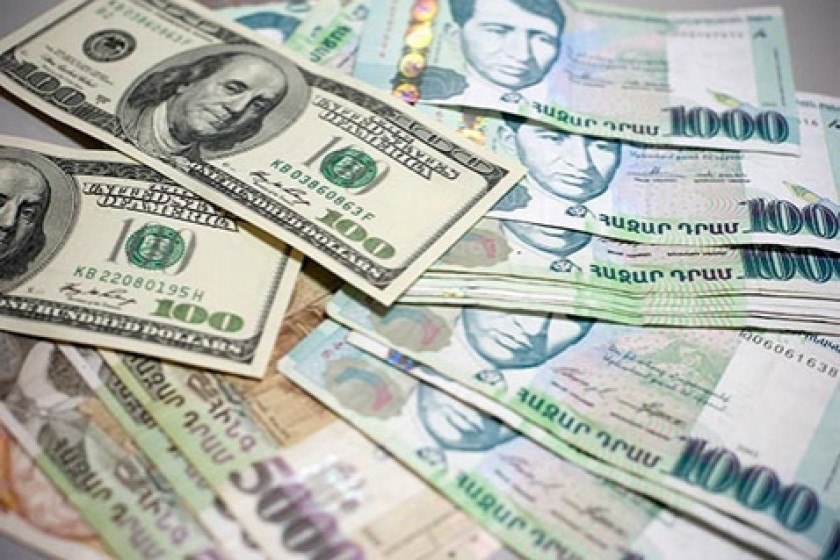
At What Cost? On the Armenian Dram's Relative Stability
Though the Central Bank of the Republic of Armenia (RA) reduced its intervention in the currency market recently, only time will tell whether the Armenian dram will maintain its relative stability.
The Armenian dram depreciated only about 0.23% against the US dollar, while noticed in the last week was even a minor strengthening of the dram. On March 3, the RA Central Bank set the official exchange rate at 413.60 AMD to the $1 US dollar; on March 10, this rate was 414.80 AMD; while on March 14, one US dollar was valued at 414.56 AMD.
But behind the relative stability of the Armenia dram is the RA Central Bank's large-scale dollar interventions. Apart from the fact that the RA Central Bank in February paid about $60 million in the currency market, an additional $51 million was added to this in the first few weeks of March. At the start of the year, the RA Central Bank paid about $120 million in the market — a record breaker in the last 5 years.
By the way, March 3–9 was a decisive period, when $35 million was dumped into the market at once. Most certainly, the current relative stability of the dram is quite expensive for our international reserves. Perhaps the RA Central Bank is assured by the fact that the International Monetary Fund on March 7 confirmed its decision to provide Armenia with a $128 million loan.
The RA Central Bank last week somewhat reduced the amount of its interventions (only $16.4 million). This gives us some hope that there is less pressure on the dram's exchange rate, and financial shocks will be avoided in the near future. This is very important, since Armenia's reserves aren't great, and the RA Central Bank, even with the help of the IMF, will barely be able to ensure artificial rates on a long-term basis.
Furthermore, that isn't even necessary: we have about $3 billion of negative foreign trade balance, which can be counteracted only through the weakening of the dram. But the dram's drastic depreciation might cause problems in terms of financial stability, which compels the RA Central Bank not to overlook resources, in order not to allow a further decline in the rate of the dram. Clearly, the RA Central Bank is not rushing "to follow the [Russian] ruble" and despite the need for coordinating currency policies within the scope of the Customs Union, it currently adopts a more independent policy.
Remittances from family and friends abroad to Armenia will gradually resume this month, which will work in the dram's favor. But the role of this factor shouldn't be overestimated. There is the problem of a dollar deficit in Russia; thus, labor migrants will have difficulty exchanging rubles for dollars. In other words, flowing to Armenia will be a large amount of rubles not dollars.
Not ruled out is the possibility that through the large-scale dollar interventions, the RA Central Bank will succeed in temporarily offsetting the panic in the market, which is also in the dram's favor. Presently, this is the maximum that can be achieved — to eliminate all negative expectations so that the exchange rate is subjected to the impact of more economic factors. To what extent this will succeed will be clear in the coming weeks.
 Videos
Videos Photos
Photos




Write a comment